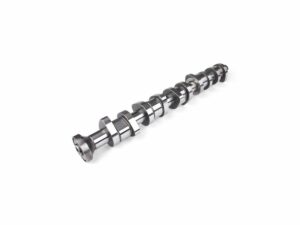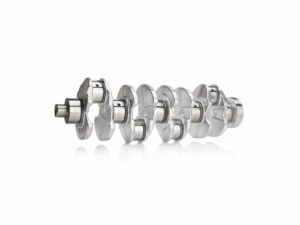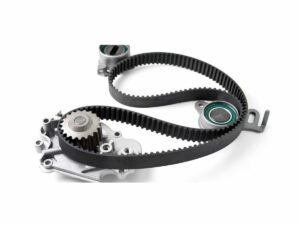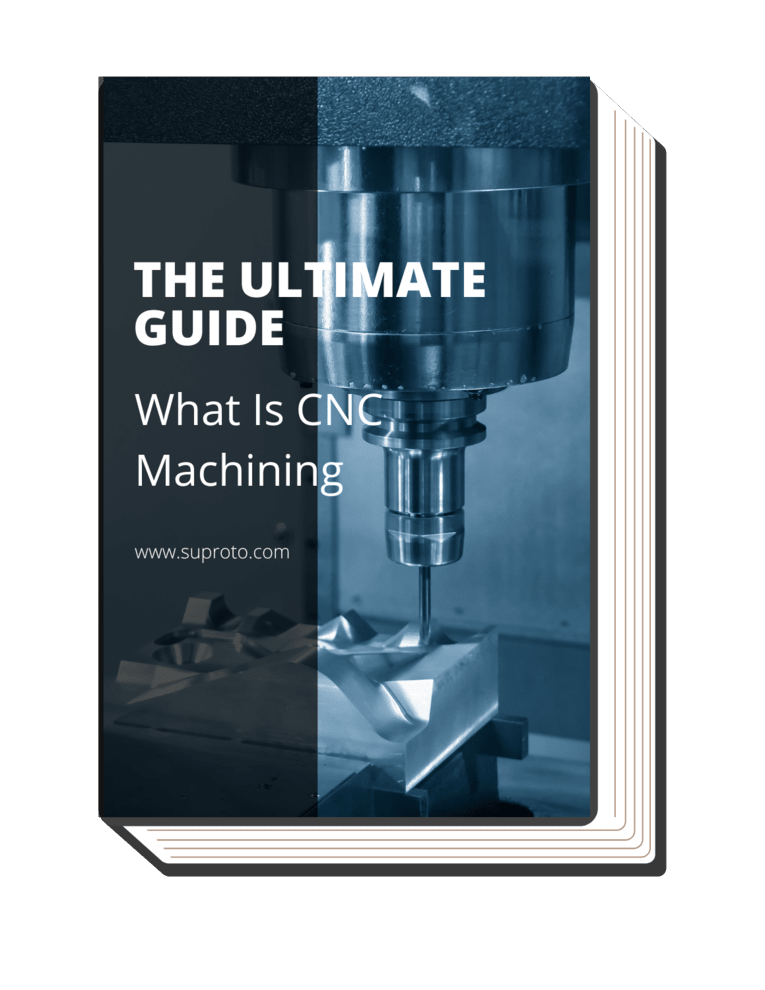1. Overview of the Role of Camshaft and Crankshaft
In the intricate ballet of an engine’s internal mechanics, the camshaft and crankshaft are the principal dancers. The camshaft and crankshaft work in unison, transforming linear motion into rotational motion, which is the lifeblood of any engine.
Notably, they must work together in a well-orchestrated sequence for the engine to operate smoothly. Additionally, the camshaft operates the intake and exhaust valves while the crankshaft converts the reciprocating motion of the pistons into rotational motion. This synchronicity ensures that power is harnessed and used efficiently.
The History and Evolution of Camshaft and Crankshaft
The camshaft and crankshaft are two of the most integral components of an engine. Understanding the progression of these components is essential in grasping their current complexities and applications. Below, a brief overview of the historical timeline is given, let’s dig in.
Early Beginnings
The camshaft, as a fundamental concept, dates back to ancient times. One of its primordial uses was in the trip hammer, which utilized a basic form of cam to transform rotational motion into reciprocating motion. In 1206, the Arabic inventor, Al-Jazari, described the earliest known crankshaft, which he incorporated with a crank and connecting rod mechanism in his twin-cylinder pump.
Middle Ages
As the world entered the Middle Ages, camshaft technology was refined and integrated into more complex machinery. The late 18th century witnessed a pivotal moment with the development of the rotative steam engine. This innovation entailed an eccentric component that converted the rotation of the crankshaft into the reciprocating motion of the valve gear. Moreover, crankshafts evolved with the engine designs.
Present
Fast forward to the early 20th century, the camshaft saw significant advancements. Presently, camshafts are intricately designed, often made of steel or cast iron, and play a critical role in controlling the intake and exhaust valves of piston engines. The crankshaft has also undergone a radical transformation. Today’s crankshafts are made from robust materials like steel or cast iron, and they can withstand enormous stresses.
2. Camshaft: Functions and Characteristics
Moving on to the star of the top end of an engine, the camshaft. The camshaft is a critical component in the valve train, playing an integral role in the regulation of air and fuel entering the combustion chamber, as well as channeling out exhaust gases once combustion is complete. The camshaft uses its cams, which are eccentric or egg-shaped lobes, to open and close engine valves. Check it out at Suproto.

Strengths and Weaknesses of Camshaft
The camshaft, a vital part found near the top of an engine, has a number of distinguishable strengths and several weaknesses. Let’s examine the strengths and weaknesses of the camshaft.
Strengths:
- Increased Power: The use of multiple camshafts allows for more valves, facilitating increased airflow, and ultimately boosting engine power.
- Precise Control: Camshaft lobes are designed in various shapes and sizes, enabling precise control over how much and how long a valve opens.
- Efficient Valve Timing: The camshaft is instrumental in efficient valve timing, ensuring that intake and exhaust gases are properly managed during the combustion cycle.
Weaknesses:
- Complexity: The design and setup of camshafts, especially in multi-cam configurations, add complexity to the engine.
- Maintenance: Camshafts require regular maintenance and precise alignment with crankshaft gears for optimal performance.
- Cost: Multiple camshafts and sophisticated control mechanisms can escalate the cost of the engine.
3. Crankshaft: Functions and Characteristics
On the other side of the spectrum lies the crankshaft, an engineering marvel situated in the lower realm of the engine. I can tell the crankshaft is the very essence of force and motion, as it takes on the enormous power generated by combustion. As the pistons are thrust downwards, the crankshaft goes into a rotational frenzy, which ultimately becomes the driving force of the engine.

Strengths and Weaknesses of Crankshaft
The widespread use of crankshafts demonstrates their versatility in their applications. However, like other instruments, they possess several notable strengths and a few weaknesses. Let’s evaluate the strengths and weaknesses of the crankshaft.
Strengths:
- Torque Conversion: The crankshaft is adept at converting the linear force of the pistons into rotational torque, crucial for propelling vehicles.
- Durable: Made from high-strength materials, crankshafts are designed to withstand the significant forces generated during the combustion process.
- Consistent Rotation: By balancing the forces of the pistons, the crankshaft maintains a steady rotational momentum which is essential for smooth engine operation.
Weaknesses:
- Weight: Crankshafts are often heavy, which can contribute to the overall weight of the engine, impacting fuel efficiency.
- Costly Repairs: Due to the crankshaft’s integral role and location within the engine, repairs can be labor-intensive and costly.
- Vibration: Crankshafts are susceptible to vibrations, which, if not properly managed, can lead to material fatigue and eventual failure.
4. Key Differences Between Camshafts and Crankshafts
As an expert, I must commend showing interest in understanding the technicalities of these two vital components of an engine. Let me break down the key differences between camshafts and crankshafts:
Function and Position in the Engine
The camshaft is primarily concerned with the opening and closing of the engine valves. Camshafts are generally located at the top end of an engine and play a critical role in the valve train. On the other hand, the crankshaft is situated at the bottom end of the engine and is crucial for converting the linear motion of the pistons into rotational motion, which ultimately powers the vehicle.
Operational Dynamics
The camshaft and crankshaft work together, albeit at different speeds. The camshaft is driven by the crankshaft via a timing chain or belt, and due to the speed reduction mechanism in place, the camshaft rotates at half the speed of the crankshaft. I believe, in a four-stroke engine, the crankshaft completes two revolutions for each combustion cycle, whereas the camshaft completes a single revolution.
Material and Torque Handling
Camshafts are typically constructed from steel or cast iron, and they require relatively less torque for operating the valves. The camshaft is engineered to be precise in controlling how much and how long a valve opens. Conversely, crankshafts are usually made of alloy steel and are designed to handle a high amount of torque due to the massive forces involved in the combustion process.
Shape and Components
Camshafts have a linear arrangement with egg-shaped lobes attached along their length. These lobes are crucial for the opening and closing of engine valves as they transfer motion through various parts of the valve train. On the other hand, crankshafts are characterized by an uneven appearance with webs, pins, and connecting rod journals, resembling the middle of a Jenga game.
The table below provides insights into the shape and components of camshafts and crankshafts, highlighting the crucial role of lobes in camshafts for valve control and the intricate arrangement of webs, pins, and journals in crankshafts for power transmission. Explore the distinct characteristics and functions of these essential engine components.
| Shape and Components of Camshafts and Crankshafts |
Description |
| Camshafts |
Camshafts typically have a linear arrangement with a cylindrical shape. Along the length of the camshaft, egg-shaped lobes are attached. These lobes play a crucial role in the engine’s valve train system, controlling the opening and closing of engine valves. The shape and arrangement of these lobes determine the timing and duration of valve events, impacting the engine’s performance and power output. |
| Crankshafts |
Crankshafts have a distinctive uneven appearance with various components. They consist of multiple webs, pins, and connecting rod journals that form the central part of the crankshaft. The webs provide structural support and connect the crankshaft’s main bearings, while the connecting rod journals interface with the connecting rods. These components work together to convert the reciprocating motion of the pistons into rotational motion, transmitting power to the drivetrain. The intricate design and arrangement of these components ensure smooth engine operation and efficient power delivery. |
Role in Power Generation and Transfer
Camshafts are primarily responsible for controlling the opening and closing mechanisms for intake and exhaust valves, which are essential for the combustion process in the engine. In contrast, the crankshaft plays a direct role in power transfer. It takes the power generated by the pistons’ motion and transfers it to the transmission, converting the reciprocating motion of the pistons into rotational motion, that drives the wheels of the vehicle.
5. Interplay and Synchronization Between Camshaft and Crankshaft
The camshaft and crankshaft must work in harmony to achieve the correct valve timing, and this is achieved through methods. Here are some to explore:
Timing Belt/Chain
Firstly, the synchronization between the camshaft and crankshaft is crucial for the proper functioning of an engine. In most piston engines, this synchronization is achieved through a timing belt or chain that mechanically connects the camshaft to the crankshaft. For example, in a race car, the timing belt guarantees that the high-revving engine’s valvetrain stays in harmony with the pistons.
Valve Timing and Overlap
Moreover, the concept of valve timing and overlap is essential in understanding the intricate relationship between camshaft and crankshaft. Valve timing is the precise moment when the valves open and close with respect to the position of the pistons. At Suproto, I have learned when both the intake and exhaust valves are open at the same time, this brief period is termed as valve overlap.

Four-Stroke Engine Cycle
For me, in the context of a four-stroke engine cycle, the synchronization between the camshaft and crankshaft is indispensable. The four strokes – intake, compression, power, and exhaust – must occur in a specific sequence. For example, in a classic four-stroke motorcycle engine or in the engine of a high-performance sports car, this synchronization ensures smooth and efficient operation.
6. 6 Factors To Consider When Choosing Between Camshaft and Crankshaft
According to Market Watch, the Camshaft and Crankshaft Position Sensors market size, estimations, and forecasts are provided in terms of sales volume (K Units) and revenue (USD millions), considering 2022 as the base year, with history and forecast data for the period from 2018 to 2029. Choosing between the two is crucial. Here is the list of factors to take note of:
#1 Engine Design
To begin with, I believe, engine design is a fundamental factor to consider when choosing between a camshaft and crankshaft. Camshafts are generally responsible for operating the valves, whereas the crankshaft converts the linear motion of the pistons into rotational motion. In a high-revving motorcycle engine, a particular camshaft profile might be chosen to maximize performance at high RPMs.
#2 Performance Goals
Additionally, performance goals are crucial in making the decision. For racing applications or engines built for high performance, different camshaft profiles and materials may be used to maximize airflow and valve timing. On the other hand, in heavy-duty trucks that require torque, the crankshaft may be built with larger bearings and a different material to handle the added stress.
#3 Engine Application
Besides, the application for which the engine is used significantly influences the choice between camshaft and crankshaft. In a generator engine, for instance, a simple and robust design may be preferred for reliability and ease of maintenance, while a high-performance sports car might have a more complex valvetrain system to extract more power.
#4 Compatibility
Equally important is compatibility. The camshaft and crankshaft must be compatible with other components such as the timing belt or chain, sensors, and engine block. For example, in retrofitting an older muscle car with a modern high-performance engine, one must ensure that the camshaft and crankshaft are compatible with the existing stainless steel and titanium system.
#5 Maintenance and Durability
At Suproto, we see maintenance and durability are essential factors. Some engines may require regular maintenance of the camshaft and its associated components, like the timing belt. In contrast, others might have a robust crankshaft that lasts for an extended period without any significant maintenance, such as in large industrial diesel engines.
#6 Budget
Lastly, budget constraints play a pivotal role in the selection between a camshaft and a crankshaft. In my experience, high-performance camshafts or forged steel crankshafts may be desirable for their performance characteristics but might not be feasible due to budget constraints. In such cases, more affordable options might be considered.
Dive Deeper Into Our Resources
Looking for more diverse service options? Browse through our handpicked selections:
Still haven’t found what you’re looking for? Don’t hesitate to contact us. We’re available around the clock to assist you.
Conclusion
As we delved into the distinctions and functions of camshafts and crankshafts, we learned that camshafts are situated at the top end of an engine, whereas crankshafts are located at the bottom. The synchronization between the two is essential for smooth engine operation.
Now, consider how the health and efficiency of a vehicle’s engine can be impacted by these components. For any queries or need more information on camshafts and crankshafts, don’t hesitate to reach out to us. Our team of experts is here to help with all engine-related questions.
Contact us today for advice and support.





